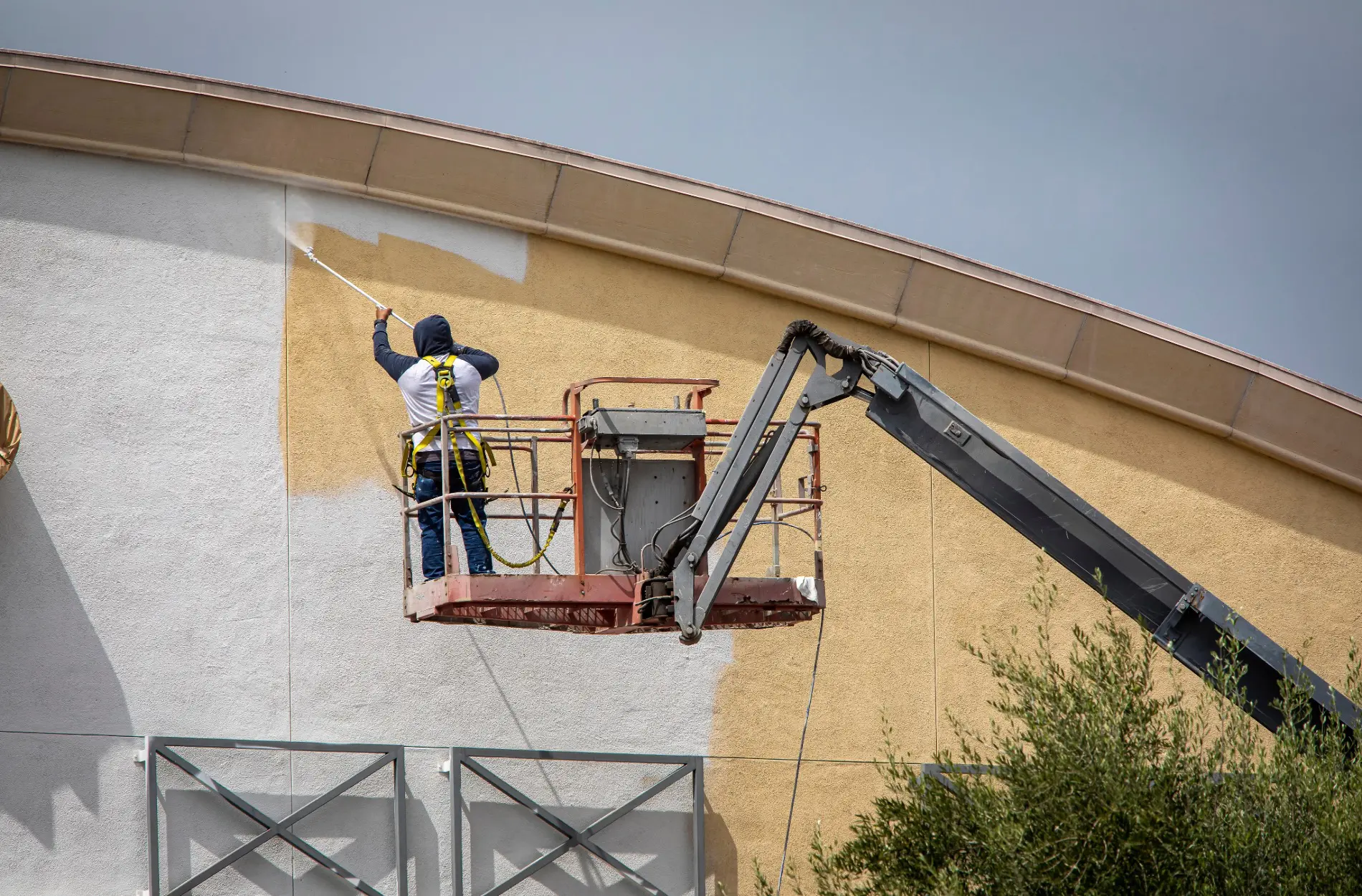Top Commercial Painting Tips for Big Spaces

Painting large commercial spaces can be challenging. The sheer size and scale demand careful planning and execution. Whether it’s a warehouse, office building, or retail store, getting it done right matters. Here are some essential Commercial Painting Tips to help guide the process.
This article offers valuable tips for tackling big commercial painting jobs. We’ll cover everything from selecting the right paint to ensuring safety on the job site. By understanding these key points, you can achieve a high-quality finish that stands up to the demands of a commercial environment.
Choosing the Right Paint and Tools
Selecting the right paint is the foundation of any painting job, especially for large commercial spaces. The type of paint you choose impacts the finish and durability.
- Paint Type: Use high-quality paint designed for commercial use. Latex paints are good for interior spaces as they are easy to clean and durable.
- Finish: Choose a finish based on the function of the space. Matte finishes hide imperfections, while gloss finishes are easy to clean.
- Color: Select colors that work well in large spaces. Lighter colors can make areas feel more open and bright.
Beyond just the paint, having the right tools is equally essential. The correct equipment ensures a smoother application and better results.
- Rollers and Brushes: Use large rollers for broad areas. Choose brushes with synthetic bristles for latex paint.
- Sprayers: For very large spaces, consider using paint sprayers. They cover more area quickly and evenly.
- Extension Poles: These help reach high places without ladders. They make painting ceilings more manageable.
Using the right paint and tools makes a significant difference in the quality of the job. It ensures that the finish is even and long-lasting.
Preparing the Space Efficiently
Preparation is a key step in any painting project. Proper prep work ensures a smooth application and extends the life of the paint job.
- Clear the Area: Remove furniture, fixtures, and equipment. Cover anything that can’t be moved with protective sheets.
- Clean Surfaces: Dust and grime can affect paint adhesion. Clean walls and surfaces thoroughly before starting.
- Repair Damages: Fix any cracks or holes in the walls. Fill them with spackling paste and sand for a smooth surface.
- Masking: Use painter’s tape to cover edges and trim. This ensures sharp, clean lines and protects areas you don’t want to paint.
Organizing the workspace also helps in efficient preparation.
- Stay Organized: Keep all your tools and materials in one place. This saves time and keeps the area tidy.
- Plan Your Steps: Start from the top and work your way down. This avoids drips and ensures even coverage.
Efficient preparation sets the stage for a successful painting project. It minimizes mistakes and ensures a professional finish. Proper prep makes the actual painting process quicker and more efficient. These commercial painting tips emphasize the importance of preparation for the best results.
Techniques for Even Coverage
Achieving even coverage is essential for a professional look. Uneven paint can result in streaks, drips, and an overall poor appearance.
- Use a Primer: Priming the surface helps the paint adhere better. It can also provide a uniform base, especially for darker paint colors.
- Apply Multiple Coats: One coat often isn’t enough. Apply at least two coats for even coverage and a richer finish.
- Maintain a Wet Edge: Keep a wet edge while painting. This prevents lap marks and blends strokes seamlessly.
- Work in Sections: Paint in manageable sections. Starting with small areas helps maintain control and consistency.
Proper techniques ensure that the paint job looks smooth and professional. Following these tips can save time and reduce the chance of redoing sections.
- Feather the Edges: Blend and feather edges while the paint is still wet. This avoids noticeable lines and creates a smooth transition.
- Roll in a ‘W’ Pattern: Use a ‘W’ or ‘M’ pattern when rolling. It helps distribute the paint evenly and prevents thick lines.
- Check for Drips: Regularly check for drips and smooth them out. Catching them early prevents dried, unsightly blobs.
These practices ensure that the paint is applied evenly, creating a clean and professional finish throughout the space.
Safety Tips and Regulations
Safety is crucial when painting large commercial spaces. Knowledge of safety practices protects both workers and the environment.
- Ventilation: Ensure proper ventilation in enclosed spaces. Good airflow prevents the buildup of fumes.
- Protective Gear: Wear protective gear, including masks, gloves, and safety glasses. This reduces exposure to harmful particles.
- Ladder Safety: Use ladders and scaffolding correctly. Ensure they are stable and used on flat surfaces.
- Handle Paint Safely: Store and handle paint materials safely. Keep them in a cool, dry place away from flames.
Following safety regulations not only protects people but also complies with legal standards. Ignoring these rules can lead to accidents and legal issues.
- Fire Safety: Have fire extinguishers available. Paints and solvents can be flammable.
- Waste Disposal: Dispose of paint and materials correctly. Follow local regulations for hazardous waste.
- Stay Informed: Keep up-to-date with safety standards. Regular training ensures everyone knows the latest safety practices.
Safety is a priority. Following these guidelines creates a safer and more efficient work environment. It prevents accidents and ensures a smooth painting process.
Conclusion
Painting large commercial spaces requires careful planning, the right tools, and proper techniques. Choosing the right paint and tools lays a solid foundation for any project.
Proper preparation ensures a smooth application and saves time in the long run. Employing techniques for even coverage results in a professional finish. Safety tips and regulations protect everyone involved and ensure compliance with legal standards.
For expert assistance with your commercial painting needs, contact us at Armor Tough Coatings today. We provide top-notch commercial painting services to meet your specific requirements. Let us help you achieve the perfect finish for your commercial spaces.


